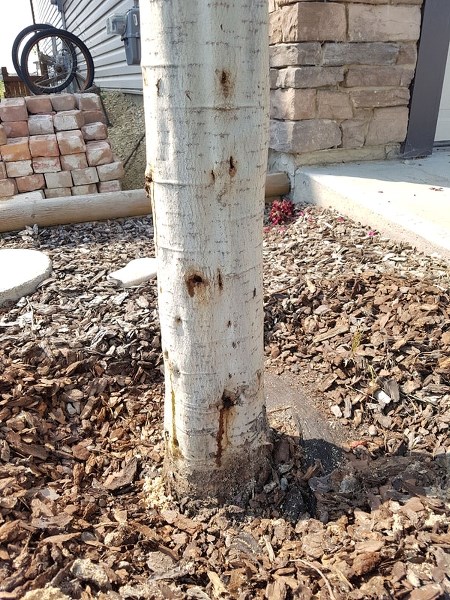There's a pesky, not-so-little beetle-shaped bug making sawdust out of poplar trees this summer. The poplar borer is a native insect species that attacks aspen poplars. Poplars grow like weeds throughout Alberta, and for the most part the trees and bugs have evolved together but for home gardeners, the main problem is the damage the borers are causing to Swedish columnar aspens.
Columnar aspens are the tall, elegant, fast-growing trees that are often planted along fences to provide a leafy screen between properties. They sell anywhere between $40 and $100 so replacement of these trees could be costly. Once the borer mines into the centre of the trees, it's hard to protect against them, so it's best to check often for signs of the bug's presence. If the bark is riddled with holes and if there is sap running down the trunk or if there is a pile of sawdust mounding up at the base of the tree, there is a poplar borer infestation. If you pull the bark back, you may notice the tunnels the borer made in the tree.
"The borers like poplars with trunks about four-inches in diameter because there is sufficient tissue for them to lay their eggs. Most often they show up in trees about three to four years of age," said Jim Hole of Hole's Greenhouses and Gardens.
Knockout borers
If the tell-tale signs are noticed on the columnar aspens, Hole recommends spraying the trees with a product called Knockout. If possible, spray the nozzle right into the holes the borer made in the bark and keep checking to see if the sawdust mounds continue to grow.
"If you get them early, there is a decent chance to kill them, but once they get into the green tissue beneath the bark, it weakens the tree and they snap off in storms," Hole said.
Borers attack trees that are suffering from lack of water or other stresses, such as rocks and landscaping fabric against the trunk.
"The borers like the heat and I find landscape fabric tends to hide the fact that the tree needs water. Rocks reflect the heat around the tree," Hole said.
Poplar borers can live for multiple years and the larvae will chew away inside the tree for two years before emerging as adults.
The inch-long borers are blue-grey in colour with speckled pinkish-brown spots, which is the perfect colour for hiding against the bark of the aspen trees.
"Look for the adults on the south-west side of the tree. Adult borers may be seen from May to August. Don't give up and keep checking for sawdust and if you see more of it, blast the tree again," Hole said.




